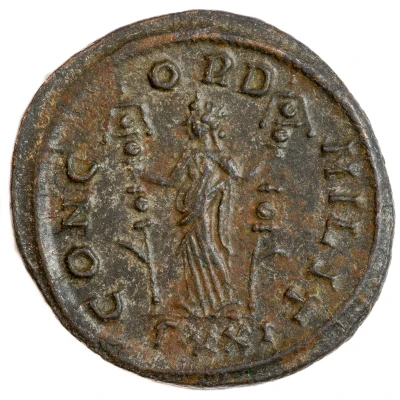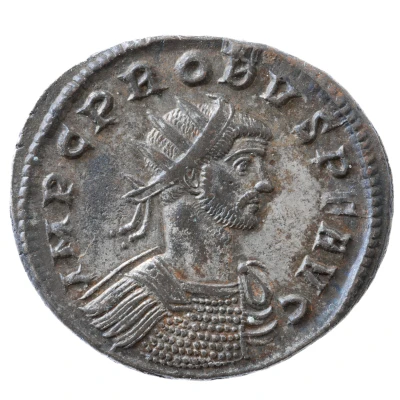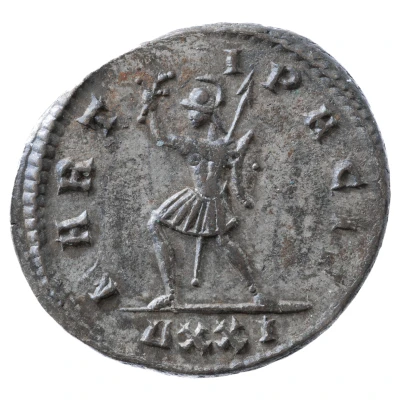


Antoninianus - Probus Cuirassed, right; CONCORD MILIT; Concordia
279 year| Silver | - | - |
| Issuer | Rome › Roman Empire (27 BC - 395 AD) |
|---|---|
| Emperor | Probus (Marcus Aurelius Probus) (276-282) |
| Type | Standard circulation coin |
| Year | 279 |
| Value | Antoninianus (1) |
| Currency | Antoninianus, Reform of Caracalla (AD 215 – 301) |
| Composition | Silver |
| Shape | Round (irregular) |
| Technique | Hammered |
| Orientation | Variable alignment ↺ |
| Demonetized | Yes |
| Updated | 2024-10-05 |
| Numista | N#292884 |
|---|---|
| Rarity index | 97% |
Reverse
Concordia, draped, standing left, holding ensign in each hand.
Officina and value mark (XXI) in exergue.
Script: Latin
Lettering: CONCORD MILIT
Unabridged legend: Concordia Militum.
Translation: Harmony with the soldiers.
Comment
RIC 531 was minted by the 1st officina (exergue/officina mark: AXXI) and the 6th officina (exergue/officina mark: ςXXI) of the Ticinum mint. The original RIC text mentions 1 variation/bust type (bust types according to Pierre Bastiens grouping of bust types; see illustrated: probvs.net):
Pink does not list the combination of the obverse legend nr. 3 ('IMP C PROBVS P F AVG') reverse legend 'CONCORD MILIT' and exergue mark '-/-//ςXXI' at all (Karl Pink, Der Aufbau der römischen Münzprägung in der Kaiserzeit VI/I, Wien, 1949, p. 60-61), but he does list legend nr. 3, 'CONCORD MILIT' and '-/-//AXXI' for the 6th emission (phase B) (year 279). According to Pink the 6th officina only used the exergue mark '-/-//ςXXI' during the 6th emission. Presumably this is the reason probuscoins.fr and probvs.net attribute the published example of RIC 531 (the same as on Numista) with exergue mark '-/-//ςXXI' to the 6th emission.
There is also a variant of RIC 531 known (not listed in Numista) with the obverse legend 'IMP C M AVR PROBVS AVG' in stead of 'IMP C PROBVS P F AVG'. See:
- bust B, officina/exergue mark AXXI, probuscoins.fr #1200;
- bust B, officina/exergue mark AXXI, probuscoins.fr #4436.
Interesting fact
The Antoninianus coin, which was issued during the reign of Emperor Probus (276-282 AD), was the first Roman coin to feature the goddess Concordia on its reverse side. This was a significant departure from the traditional Roman coinage design, which usually featured gods and goddesses from classical mythology. The inclusion of Concordia, who was the goddess of harmony and unity, was a deliberate choice made by Probus to promote the idea of concord and cooperation among the Roman people. This coin, therefore, serves as a fascinating example of how currency can be used as a tool for political propaganda and social engineering.

